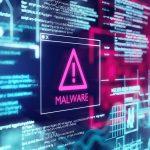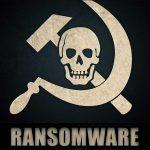Ransomware remains one of the most pervasive and destructive forms of malware. Among the many variants that have emerged, Lord Bomani Ransomware has gained notoriety for its sophisticated encryption techniques and the significant damage it inflicts on compromised systems. This article provides an in-depth look at Lord Bomani Ransomware, detailing its actions, consequences, detection methods, and offering a thorough removal guide along with best practices for preventing future infections.
What is Lord Bomani Ransomware?
Lord Bomani Ransomware is a type of malware that encrypts the files on an infected computer, rendering them inaccessible to the user. The attackers then demand a ransom, typically in cryptocurrency, in exchange for the decryption key. This particular ransomware variant is known for its ability to target a wide range of file types and employ strong encryption algorithms, making file recovery without the decryption key nearly impossible.
Actions and Consequences
Actions
- Infiltration: Lord Bomani Ransomware often infiltrates systems through phishing emails, malicious attachments, or exploit kits. Once executed, it begins to encrypt files on the infected machine.
- Encryption: The ransomware uses a robust encryption algorithm to lock files, appending a unique extension to each encrypted file, which serves as a marker of infection.
- Ransom Note: After encryption, the ransomware drops a ransom note in various folders, detailing the payment instructions and the ransom amount demanded. The note typically threatens permanent data loss if the ransom is not paid within a specified timeframe.
- Communication: Some variants of Lord Bomani Ransomware also attempt to communicate with a command-and-control (C2) server to report new infections and receive further instructions.
Consequences
- Data Loss: Victims may lose access to critical data, leading to significant operational disruptions, especially for businesses.
- Financial Impact: Paying the ransom, while not recommended, can be a costly affair. Additionally, the recovery process can incur substantial expenses in terms of time and resources.
- Reputation Damage: Organizations suffering from ransomware attacks may face reputational damage, leading to loss of trust among clients and partners.
- Potential Data Breaches: In some cases, ransomware attacks are accompanied by data breaches, where sensitive information is exfiltrated and potentially sold or leaked.
Ransom Note
TheLord Bomani ransomware operators leave a ransom note with instructions for the victims. The text in the ransom note is as follows:
Lord Bomani Encrypted your File;(
All your files have been encrypted!lord_bomani@keemail.me
All your files have been encrypted due to a security problem with your PC.
If you want to restore them, write us to the e-mails: lord_bomani@keemail.me and jbomani@protonmail.com and Bomani@Email.Com
(for the fastest possible response, write to all 3 mails at once!)
Write this ID in the title of your message:
–
You have to pay for decryption in Bitcoins. The price depends on how fast you write to us. After payment we will send you the tool that will decrypt all your files.
Free decryption as guarantee
Before paying you can send us up to 3 files for free decryption. The total size of files must be less than 5Mb (non archived), and files should not contain valuable information. (databases,backups, large excel sheets, etc.)
How to obtain Bitcoins
The easiest way to buy bitcoins is LocalBitcoins site. You have to register, click ‘Buy bitcoins’, and select the seller by payment method and price.
hxxps://localbitcoins.com/buy_bitcoins
Also you can find other places to buy Bitcoins and beginners guide here:
hxxp://www.coindesk.com/information/how-can-i-buy-bitcoins/
Attention!
Do not rename encrypted files.
Do not try to decrypt your data using third party software, it may cause permanent data loss.
Decryption of your files with the help of third parties may cause increased price (they add their fee to our) or you can become a victim of a scam.
We also upload a huge amount of your personal data, including confidential information, financial information, customer personal information, passwords, and so on. Everything that we downloaded will be leaked for public use in case of non-payment or after the expiration of your key for decrypting files.
Hurry up! The decryption keys for your files may be overwritten and then recovery of your files will not be possible! (this usually happens a week after encrypting your files.)
Detection
Various cybersecurity tools and vendors have identified and labeled Lord Bomani Ransomware under different names. Some common detection names include:
- Win32/Filecoder.LordBomani.A by ESET
- Ransom.LordBomani by Symantec
- Trojan.Ransom.LordBomani by Trend Micro
Similar Threats
Lord Bomani Ransomware shares characteristics with several other notorious ransomware families, including:
- Ryuk Ransomware: Known for targeting large organizations and demanding high ransoms.
- Sodinokibi (REvil) Ransomware: Notable for its double extortion tactics, combining file encryption with data theft.
- Dharma (CrySIS) Ransomware: Frequently distributed through remote desktop protocol (RDP) attacks.
Removal Guide
Removing Lord Bomani Ransomware requires a methodical approach to ensure complete eradication and recovery. Follow these steps:
Step 1: Disconnect and Isolate
- Disconnect from the Network: Immediately disconnect the infected device from the network to prevent the ransomware from spreading to other systems.
- Isolate Infected Devices: Physically isolate the infected devices from the network and other peripherals.
Step 2: Enter Safe Mode
- Reboot in Safe Mode: Restart the computer and enter Safe Mode to prevent the ransomware from running during startup. On Windows, this can typically be done by pressing F8 during boot-up and selecting Safe Mode.
Step 3: Identify and Terminate Malicious Processes
- Open Task Manager: Use Task Manager (Ctrl + Shift + Esc) to identify suspicious processes. Look for unfamiliar names or processes consuming high resources.
- Terminate Processes: End the identified malicious processes.
Step 4: Remove Ransomware Files
- Check System Directories: Manually check system directories (e.g., %AppData%, %LocalAppData%, %ProgramData%) for newly created files or folders with suspicious names.
- Delete Suspicious Files: Delete any files or folders associated with the ransomware.
Step 5: Clean Up the Registry
- Open Registry Editor: Open the Registry Editor (type
regeditin the Run dialog). - Search for Entries: Search for and delete any registry entries created by the ransomware. Common locations include:
- HKEY_CURRENT_USER\Software
- HKEY_LOCAL_MACHINE\Software
Step 6: Restore Files from Backup
- Use Backups: Restore files from a known good backup if available. Ensure the backup is clean and free from ransomware before restoration.
Step 7: Update and Scan
- Update the System: Ensure the operating system and all software are up-to-date with the latest security patches.
- Perform a Full Scan: Run a full system scan using built-in antivirus software to ensure no remnants of the ransomware remain.
Best Practices for Preventing Future Infections
- Regular Backups: Regularly back up important data and store backups offline or in a secure cloud environment.
- Email Security: Be cautious with email attachments and links. Use email filtering and scanning tools to block malicious emails.
- Software Updates: Keep operating systems, software, and security tools up-to-date to protect against known vulnerabilities.
- Network Security: Implement strong network security measures, including firewalls, intrusion detection systems, and network segmentation.
- User Training: Educate employees about the risks of phishing and the importance of cybersecurity practices.
- Access Controls: Use strong, unique passwords and enable multi-factor authentication (MFA) for all critical accounts.
- Endpoint Protection: Deploy robust endpoint protection solutions that include anti-ransomware capabilities.
By following this comprehensive guide, users can better understand the threat posed by Lord Bomani Ransomware, effectively remove the infection, and implement practices to safeguard against future attacks.




